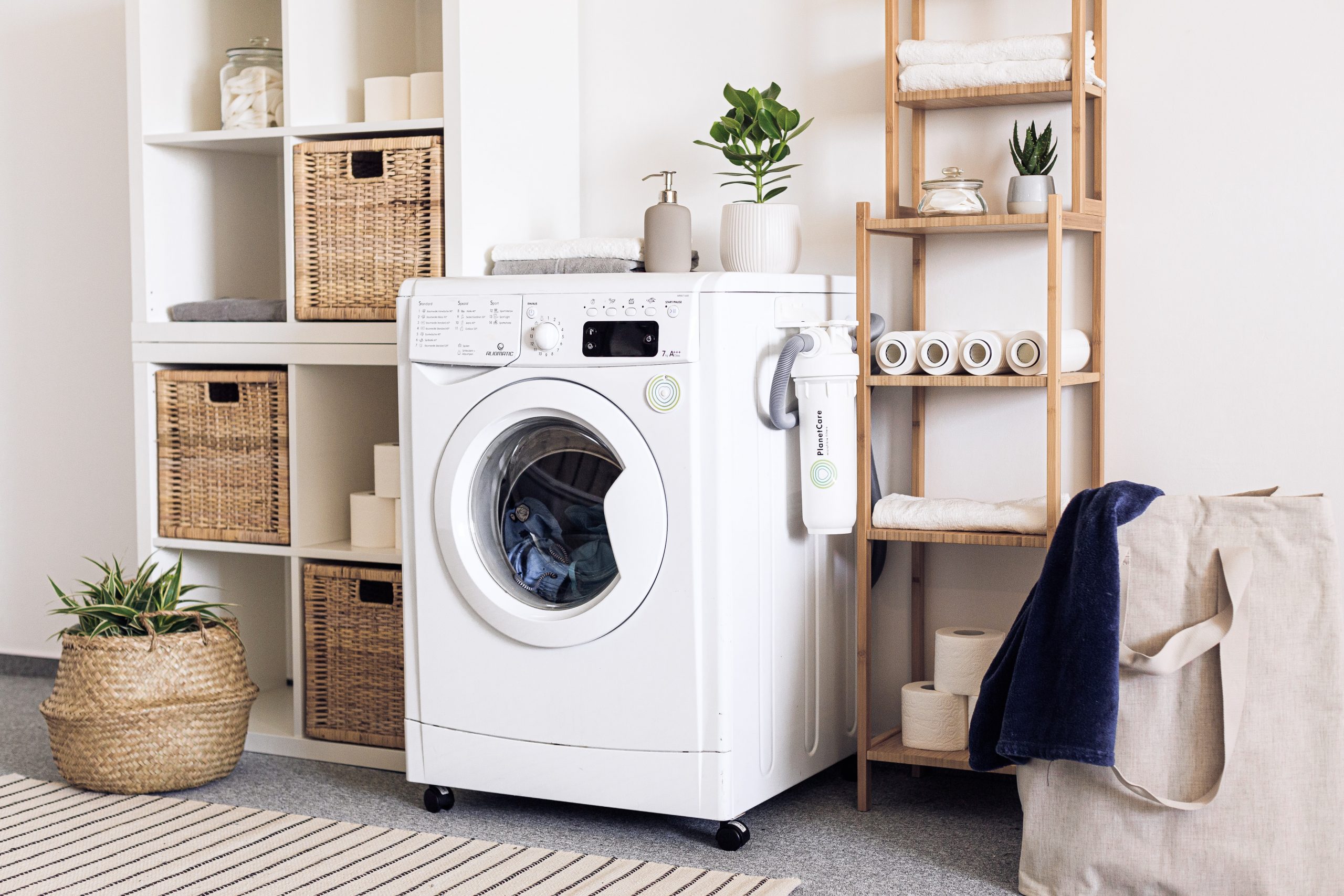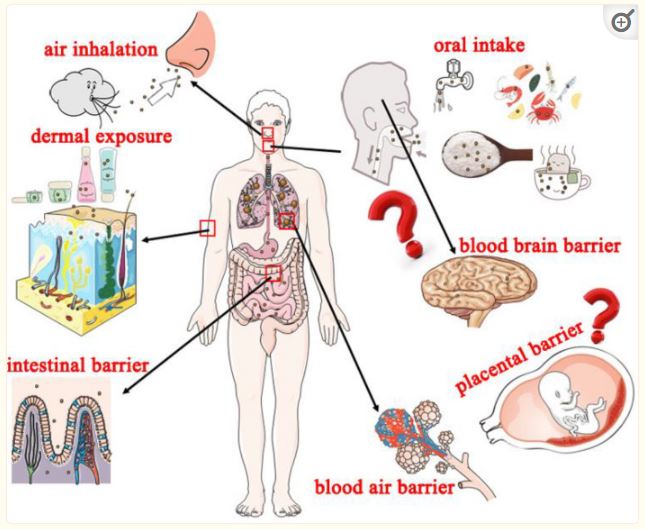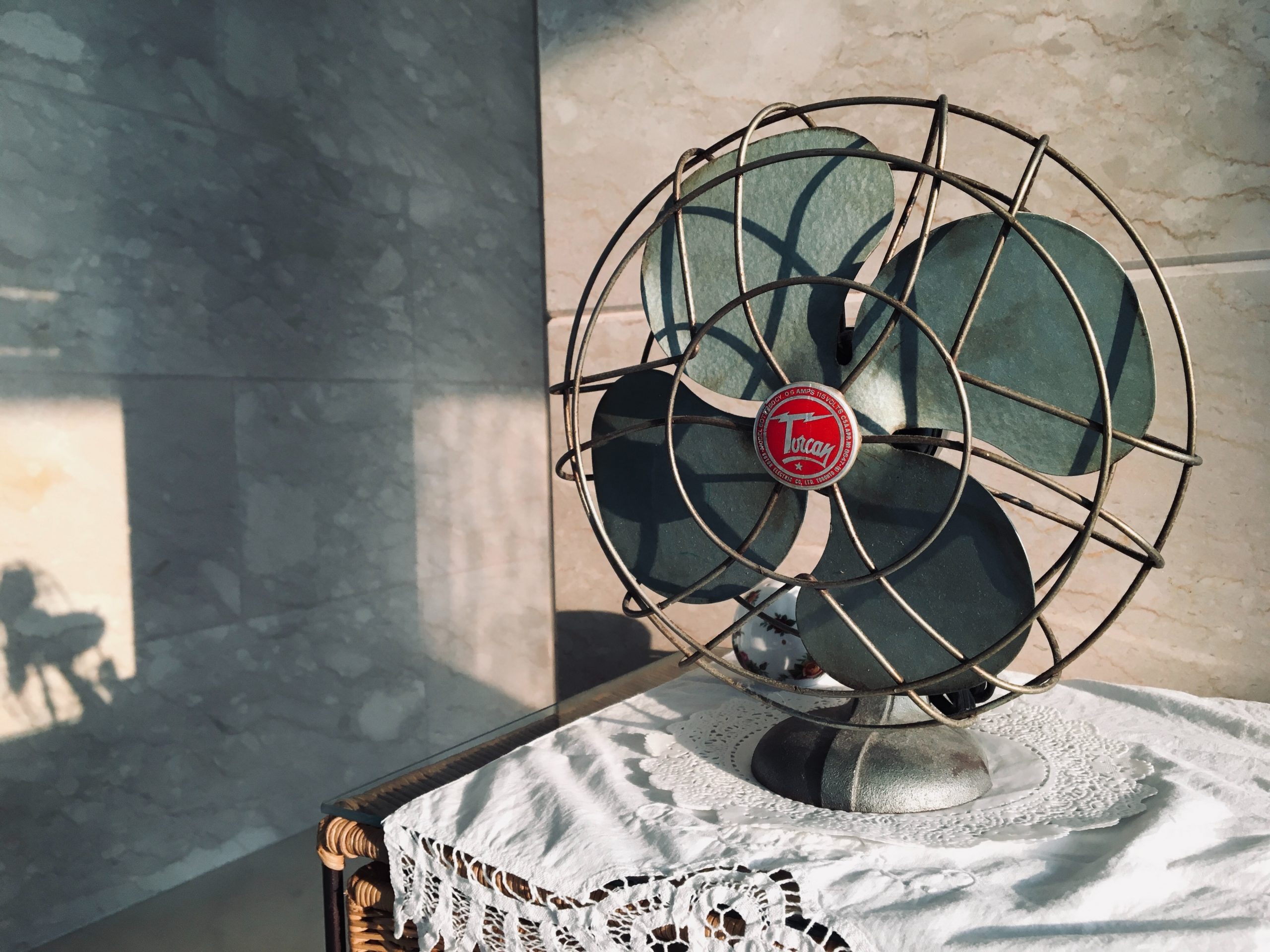Here’s the spoiler: many times you can, sometimes you can’t, but read on to find out more!
This post was borne after reading a very interesting article in The Atlantic. The author lives in an area of coastal Japan, which is dry and beautiful for ten months out of the year and very humid for the two months of summer. During the two humid months, he struggled with mold growth in his home and tested dehumidifiers, air conditioners, and finally fans and open windows. When he used the fans to find the perfect amount of ventilation, the surfaces stopped forming fuzz overnight and his shoes stopped smelling like loaves of bread. He also pointed out that according to research, he was much less likely to get sick from coronavirus or any other airborne disease with fresh air constantly diluting the rooms. I wanted to know, is good ventilation the number one key to avoiding mold problems? Is it possible to live healthy with only fresh air ventilation?
First of all, we are very accustomed to living in air conditioning. It may not always be needed, but it’s everywhere: the office, the grocery store, the gym, school, and of course, our homes. Except in select areas of the US, homes without air conditioning are even viewed as less valuable.
Is your climate temperature livable without air conditioning? Considering that the US was settled before the advent of air conditioning, then the answer is mostly yes. Of course, there are the desert areas like Las Vegas where extreme temperatures would make it very difficult, if not impossible, to live year round. The cement and asphalt of the city make it hotter today than it was during its historical roots, but on the day of the famous land auction which settled Las Vegas, men were standing outside in 110 degrees in wool suits, which means nowadays we have adapted ourselves out of the outdoors and into air conditioning.
Then, we have humidity. High humidity combined with high temperatures, as we describe in this post, impedes evaporative cooling of our bodies, to a point that 95 degree wet-bulb temperature is the maximum limit of temperature and humidity. If the climate increases beyond this (as it has for periods in India and other areas), mechanical cooling like air conditioning is necessary.
Then, we have pollution. Outdoor pollution from vehicles, airplanes, industry and a slew of other sources sometimes necessitates closing off our homes and filtering air coming in for breathability.
These are some of our human limits of comfort and endurance. But if air temperature, humidity and outdoor air quality would allow us to live without air conditioning, do our homes need it to avoid mold and be healthy? If not, what is the upper limit of humidity, such that good ventilation can keep mold in check?
There are different climates in every state in the US, and many of them are perfect for living without air conditioning. Southern California and Hawaii come to mind, for example, but according to AprilAire, Hawaii is in the top 10 most humid states! Here they are in order of decreasing humidity:
1. Alaska
2. Florida
3. Louisiana
4. Mississippi
5. Hawaii
6. Iowa
7. Michigan
8. Indiana
9. Vermont
10. Maine
Looking at this list, 4 out of 10 (Alaska, Michigan, Vermont and Maine) are among the most northern states, yet they are also among the most humid! Temperature-wise, homes in these states don’t need air conditioning for many days during the year, if any. Yet we know that humidity is a big factor in maintaining healthy air, so how is it possible to keep a healthy home in a humid environment without air conditioning?
Ventilation is the primary key. According to the Air Infiltration and Ventilation Centre (AIVC, an international organization), ventilation is “the process by which ‘clean’ air (normally outdoor air) is intentionally provided to a space and stale air is removed. This may be accomplished by either natural or mechanical means.” For our purposes, we will discuss the distribution and quantity of that fresh air. If the ventilation system delivers the right amount of fresh air, but does not circulate it throughout the home efficiently, then most of the home can be stale and ripe for mold growth. If the distribution is right but not enough fresh air is introduced, indoor contaminants are not diluted. To put it succinctly, in many homes, distribution AND quantity of fresh air are lacking. Let’s look at them individually.
Distribution
We’ll look at distribution first, because it often determines how the fresh air comes in. If you live in a naturally pristine area like the coast or country where you can leave your windows open or cracked for most seasons, this is an ideal way to bring in fresh air. In this case, check into installing a whole-house fan, which will pull air from every cracked window and exhaust it through a vent in the roof or attic. This page describes the use of a whole-house fan, including the recommended air flow for specific climates like coastal, desert, mountain or inland. Such a fan is recommended because it takes the guesswork and legwork out of setting up ventilation scenarios for each room of your home. In order to be able to leave windows open for extended periods even during rain or allergy season, check out these adjustable screens, which filter out most pollen, 95% of rain and 69% of UV rays.
If installing a whole-house fan is not possible, then you’ll need to experiment with portable and ceiling fans in order to get that fresh-air moving throughout each room. Open windows and doors across the house to get cross-ventilation, and try to direct the flow from the cooler to the warmer sides of the house to exhaust hot air. Although it may take more work to set up, a manual ventilation system can be just as effective as a whole-house fan if used continuously.
- Ceiling fans are a low-cost way to keep air from becoming stagnant in any room.
- Portable fans can be set up in windows:
- Box fans are low-cost but they will need to be moved and windows closed every time rain may threaten.
- New window fans are smarter:
At HypoAir we always recommend maintaining a humidity of 40-60% in your home in order to keep mold and germs at a low level. I went back to a study performed before the widespread use of air conditioning in homes, in order to find out how they prevented mold in the “olden days”! An extensive experiment conducted over one year and published in 1953 showed that the amount of mold that grows on a substance depends on the nature of the substrate (material) and the relative humidity (RH) in the air above it. Leather, cheese, wool cloth, wood, cotton cloth, and glass wool (like fiberglass) were tested in sealed environments of different equilibrium humidities. It was found that:
- “In humidity tests of one year's duration, leather and cheese were susceptible to growth of mildew at 76 per cent R.H. and higher; wood and wool mildewed at 85 per cent R.H. and greater, while cotton cloth and glass wool failed to mildew at 92 per cent R.H. but mildewed at 96 per cent and 100 per cent R.H.”
- An atmosphere of 65% RH or less “might be considered safe for permanent storage of all materials (studied)”.
- “...molds obtain their moisture directly from the substrate rather than from the moisture in the air…The minimum humidity for the occurrence of mold growth was related to the equilibrium moisture content of each material at each humidity…”
- “It is concluded that the water-absorbing properties of the substrate play an all-important role in determining the limiting humidity of the atmosphere at which mildew will occur. It is postulated that the fungus is incapable of obtaining moisture for mycelial development directly from the atmosphere (except at 100 per cent R.H.) but derives it from the substrate which obtains the moisture from the atmosphere.”
In layman’s terms, each substance (leather, cheese, cotton cloth, etc.) had a different minimal humidity at which mold grew. The substance absorbed water from the air, and the mold spores took their nourishment from the water in the substance and the food in the substance. If the humidity in the air was kept low enough so that the substance could not absorb the minimal amount of moisture for mold growth, no mold would form on it. This experiment did not employ any ventilation, so we will go into that next.
How did our ancestors keep the humidity in their furnishings and clothing down when the air coming in from the outside was humid? Ventilation is still the answer. Ventilation helps evaporation, which lowers the moisture content of the substance, and here is how.
Evaporation is the movement of water from its liquid form (in the substance) to its vapor or gaseous form, that we call water vapor (serc.carleton.edu). Evaporation is influenced by temperature, relative humidity and wind. Higher temperature = more evaporation. (Evaporation rates are higher at higher temperatures because as temperature increases, the amount of energy necessary for evaporation decreases, and higher temperature air can hold more water vapor.) Next, higher relative humidity = less evaporation. (The more humid the air, the closer the air is to saturation, and less evaporation can occur.) Finally, more wind = more evaporation. (Wind moving over a water or land surface can also carry away water vapor, essentially drying the air, which leads to increased evaporation rates.) Therefore in a house, hot dry air circulating is great for preventing mold, but generally on a summer day we can get 2 out of 3: heat, higher humidity, and circulation.
Here is a more detailed explanation of how air circulation helps evaporation: “Evaporation increases the humidity of the atmosphere that immediately surrounds the liquid. This humid air takes some time to dissipate into the rest of the atmosphere. The presence of a breeze, a powerful wind, or some other form of air circulation can speed up this process and make the environment of the liquid less humid. Therefore, by decreasing the humidity of the liquid’s surrounding, a powerful breeze or wind can increase the rate at which the liquid evaporates.”(bjyus.com)
This leads to the conclusion that the RH of the air can differ from RH of the substrate. Scientists have devised a different term for RH of the substrate, calling it water activity, aw, which is expressed as a decimal, or equivalent relative humidity “ERH”, which is expressed as a percentage. (We’ll stick with ERH in order to compare it directly with RH of the air.) ERH is equal to RH at the surface of the material only when the system is confined to the extent that the atmosphere above a moist surface is at the same vapor pressure and temperature as that directly at the moist surface. This is called a “steady-state”. In actual environments, however, there is usually a gradient of vapor pressure from the surface into the air above or vice versa. Since RH =partial pressure/vapor pressure x100%, and vapor pressure in the atmosphere is variable, this means that RH is constantly varying throughout a room. This means that ventilation, which affects vapor pressure at the surface of the substrate, affects relative humidity of the air contacting the substrate to determine the ERH (the moisture content of the material).
In a more recent (2019) study on ventilated insulation panels for housing, ventilation channels are shown to intensify removal of moisture from insulation, meaning that ventilation dried the insulation: “...even with a high humidity of the indoor air of about 70%, the relative humidity of the air in the material of insulation did not exceed 50%, which provided high heat-protected properties of the panels.”
A second recent (2020) study of homes in the UK found that higher concentrations of mold, and thus more “moldy odors” are found in bedrooms rather than living rooms. There are several reasons for this, even though the average humidity in both rooms was very similar. The presence of more people in living rooms naturally causes more circulation of air in living rooms. Also, the presence of large pieces of furniture such as wardrobes and beds placed near walls in the bedroom impedes circulation of air. Thus, circulation of air was implied to lower the mold concentration in the living room over the bedroom.
According to Cleaning and Maintenance Management, a property restoration company, here is how we can understand the drying process: “Low relative humidity (RH) is necessary for drying, as moisture in materials and air seek equilibrium. The lower the RH of the air, the quicker the wet materials will give up their moisture to become equal with the moisture in the air. …Air movement is the workhorse of drying by displacing high RH at the surface of wet materials with lower RH. Circulation airflow moves wet air to our dehumidification systems (either mechanical or ventilation), allowing us to manage RH and water vapor in the air.
Next, we’ll explore how the quantity of fresh air to bring in is determined by the advised minimum, and by temperature.
According to the EPA, ASHRAE (formerly called the American Society of Heating, Refrigerating and Air-Conditioning Engineers) recommends (in its Standard 62.2-2016, "Ventilation and Acceptable Indoor Air Quality in Residential Buildings") that homes receive 0.35 air changes per hour but not less than 15 cubic feet of air per minute (cfm) per person.
Too much fresh air can be bad in hot, humid climate, because heat increases the amount of moisture air can hold. A 2013 study showed that in very humid climates (like Bangkok, Thailand), reducing ventilation to the minimum (by ASHRAE) reduces indoor mold formation. This is due to the fact that bringing in air from outdoors that is greater than 70% humidity, increases humidity inside. This is not the case in a lower humidity climate like State College, PA, where they conducted a similar experiment: indoor humidity did not increase above 70% because outdoor humidity was not high.
Too much fresh air can also be bad in cold climates, because bringing in cold air can cause condensation. A study in Sweden showed that in cold attics where insufficient sealing caused warm air to leak through the upper ceiling into the attic, traditionally vented attics allowed too much fresh cold air into the attic and caused condensation on the underside of the roof, resulting in mold and rot. “The optimal air exchange rate varies with the outdoor climate, and fixed ventilation through open eaves and/or gable and ridge vents is not always the best choice. To get optimized ventilation regardless of type of external climate, attic insulation, airtightness, etc., ventilation must be controlled and adapted to the present situation. By using sensor technology and mechanical ventilation and making the attic as airtight as possible, this can be achieved.... A basic system would comprise mechanical fans and dampers controlled by attic and outdoor climate sensors installed in a sealed attic without vents. The ventilation system runs only when the outdoor air has a potential to dry out the attic.”
In the article “Ventilation won’t prevent attic mold growth” by Jeffrey May, Founder and Principal Scientist of May Indoor Air Investigations LLC in Tyngsborough, MA, various attic situations with ventilation showed mold due to warmer air leaking into the cold attic space from the home below, causing condensation. These were usually mediated by sealing the attic floor better (for example, sealing the attic stair access and older can lights) or converting the attic to a conditioned space by sealing it off from the outdoors and providing more insulation.
In the basement, EZBreathe is a product that operates on sensors to draw humid air out of the basement, ventilating with less humid air from the upper levels of the home. Although we generally advocate for a balanced ventilation system instead of the slight negative pressure generated by EZBreathe, it does work to keep the basement area at a lower RH than it would have by just opening windows.
A 1993 study showed that in an apartment in Japan, fungal indices were the highest in the corner where the northern and eastern walls faced outdoors. This is because these walls were colder (they faced away from the sun), causing higher relative humidity inside the room. This cautions us to pay special attention to rooms on the north side of your house.
In these five insulation, attic, basement and home situations, sensors in each space can be useful to know how much outside air to bring in according to the conditions in that space, in order to avoid mold. According to the EPA, “Mold and mildew growth can be reduced where relative humidities near surfaces can be maintained below the dew point.
The best way to explain this (per this great article) is to find out the dewpoints of the indoor and outdoor conditions. If the outdoor dewpoint is lower, you can ventilate with fresh air and still dry out your house! For example on July 26, 2002, here are the conditions inside and outside my house (a relatively “dry” hot day outside!):
Inside: 76 deg F, 67% humidity = 63 deg F dewpoint (dpcalc.org)
Outside: 91 deg F, 54% humidity = 72 deg F dewpoint (dpcalc.org)
See, even though the relative humidity outdoors is lower, if I open my windows, that hot air coming inside would be cooled and relative humidity would increase, working against my humidity goals.
Mold is not the only byproduct of high humidity in our homes. Dust mite fragments and excrement are a main allergenic component of household dust, and dust mite populations increase when more humidity is present (1996 study). “Laboratory studies of D. pteronyssinus suggest that optimal conditions for growth and development occur between 70% and 80% RH at 25°C, with acceptable ranges of 55% to 80% RH and 17°C to 32°C (Anderson and Korsgaard 1986).” Mites ingest water directly from water vapor in the air through special glands.
In addition to distribution and quantity of fresh air, a minute amount of temperature control in colder climates makes a big difference. Mechanical ventilation can actually keep indoor humidity lower than the outside air it brings in if the temperature is raised slightly. Cold foggy air has a high RH. However, if you warm up that same air, the relative humidity drops because warm air has a higher capacity to take moisture. Even on a cold, foggy day, you can fill up the house with 100% humid air, warm it up and have much less than 100% humidity inside the house.
Finally, we have a device that our ancestors did not have in fighting mold and mildew: bipolar ionization. From personal experience, adding a Mold Guard/Germ Defender unit to a small humid space like a bathroom or laundry room essentially eliminates mold formation, even if the ventilation does not keep the moisture content of the towels, wood and surfaces below what inhibits mold formation. The positive and negative ions constantly destroy mold spores and inhibit mold formation. An Air Angel can provide the same protection on a slightly larger scale (up to 300 ft2). On the largest scale, a Whole Home Polar Ionizer installed in the HVAC system distributes these ions to every room and destroys mold spores throughout the house.
So, the interesting takeaways from these studies on ventilation let us know that in many cases we can control mold without air conditioning, as long as we pay attention to:
- ventilation distribution, which is the distribution of incoming air to every space and velocity of air within the space.
- Ventilation fresh air quantity, which is the amount of outside air to bring in
- Temperature, which can affect evaporation and condensation
- Use of a BiPolar Ionization device.
Knowledge about how mold forms is a blessing that we can use to deter it!











